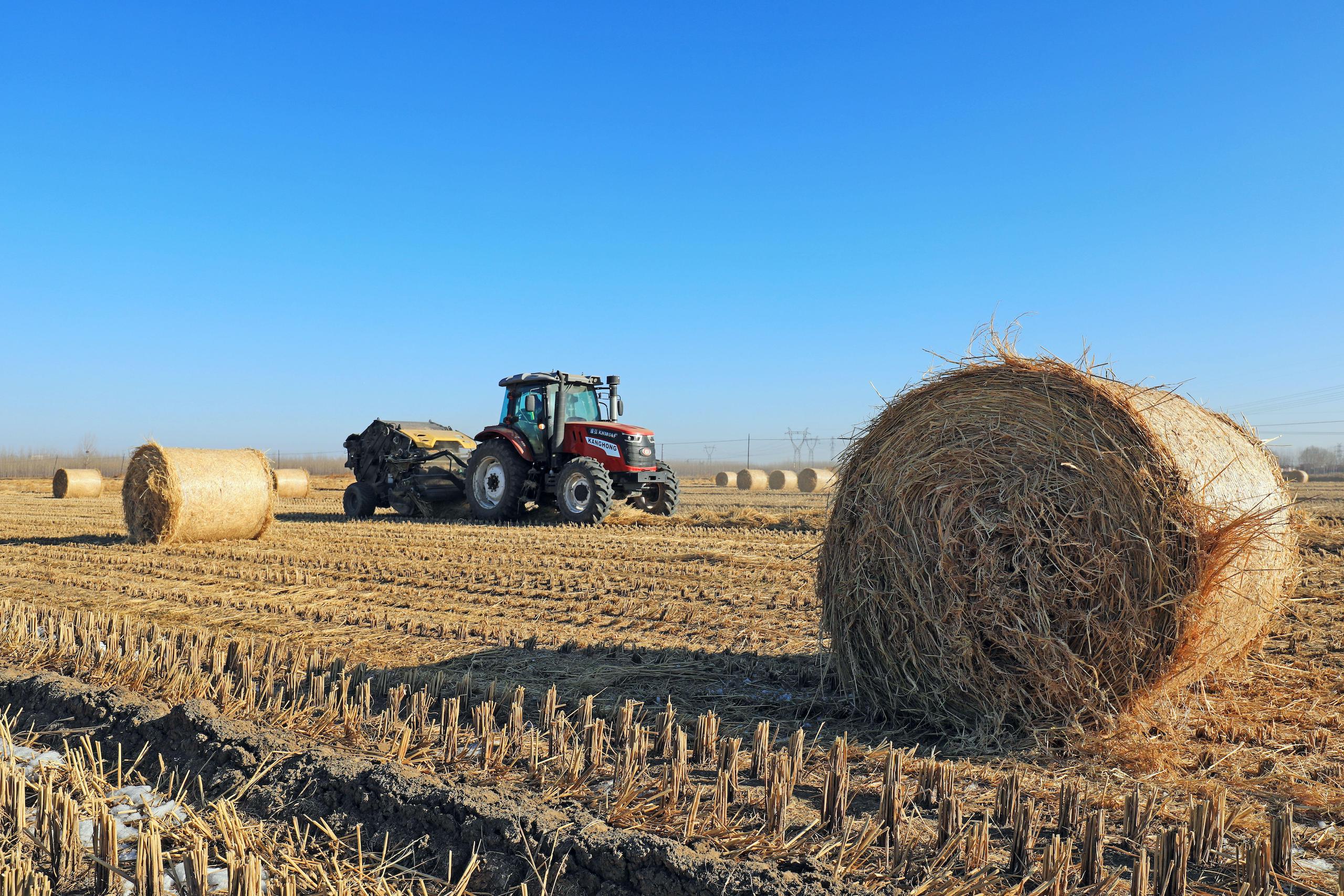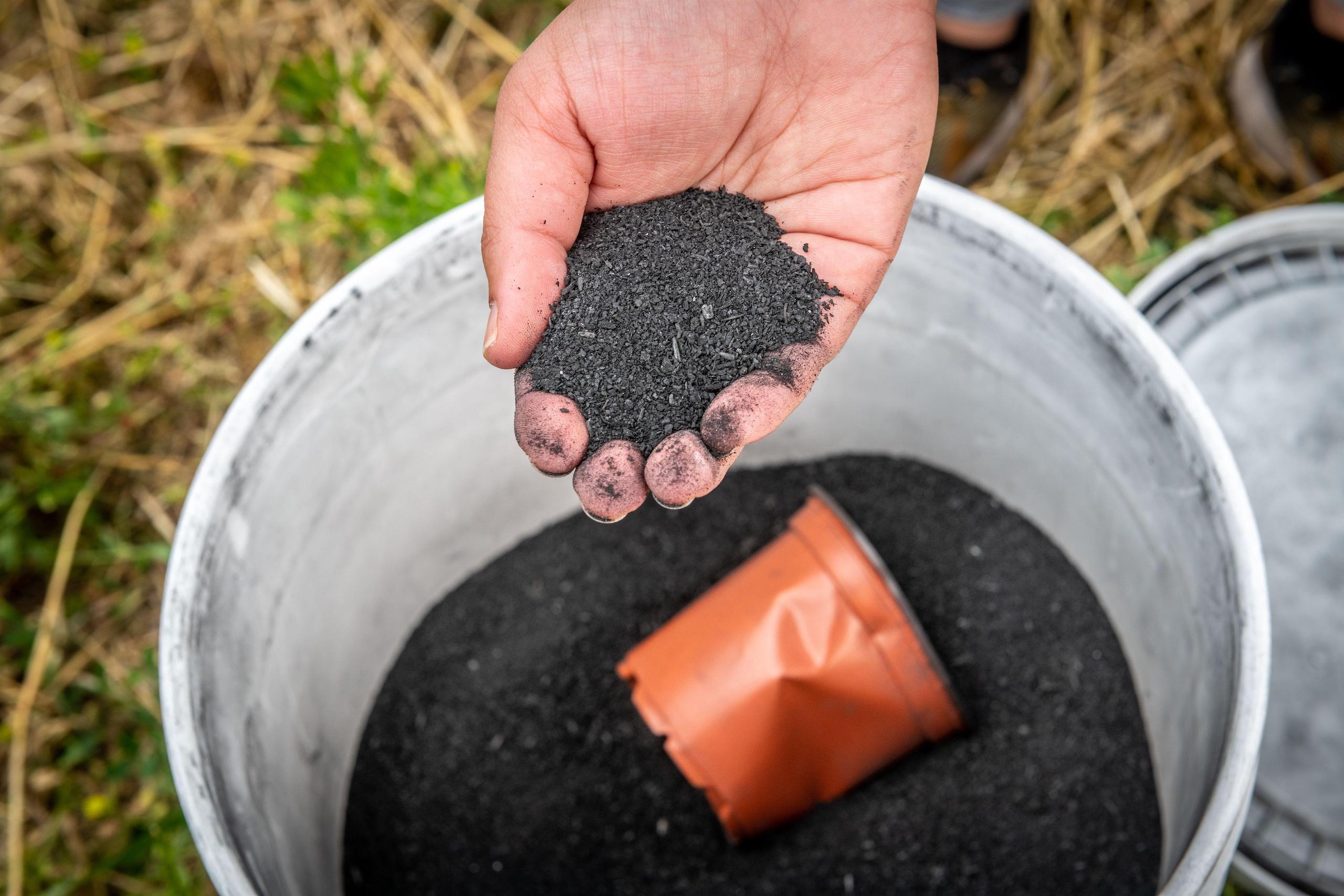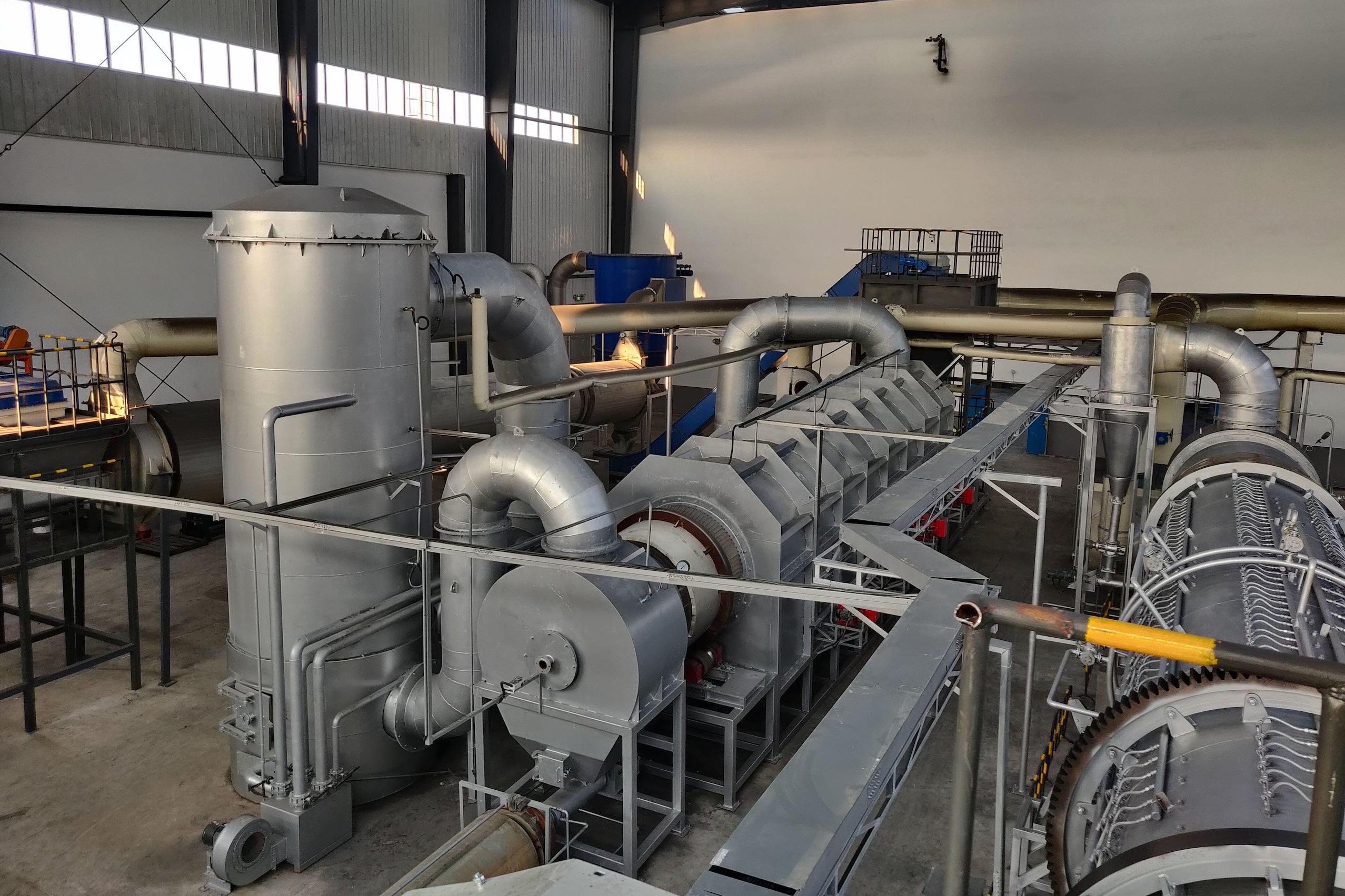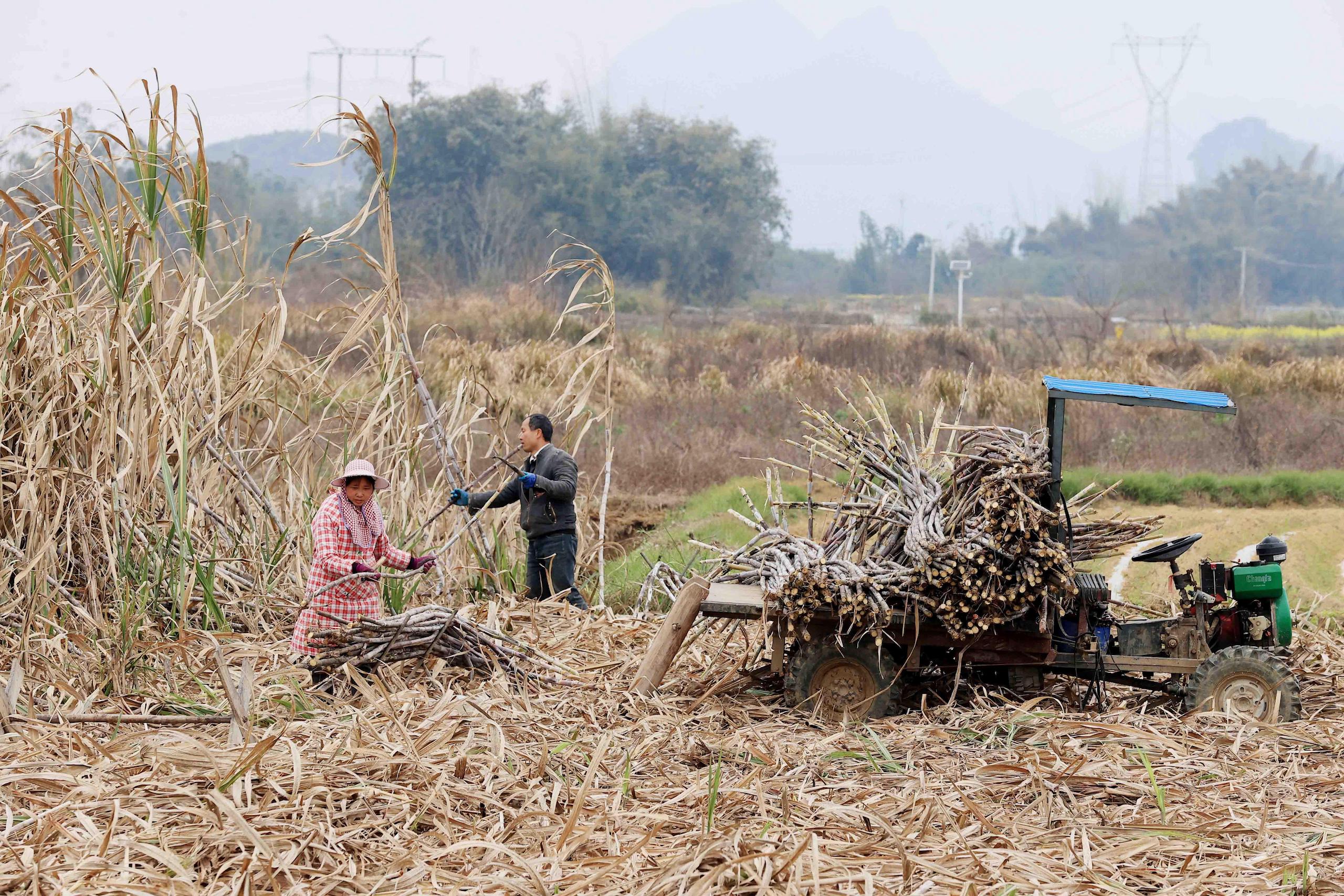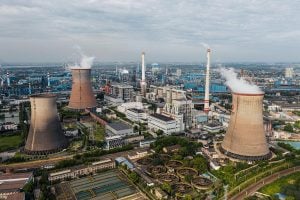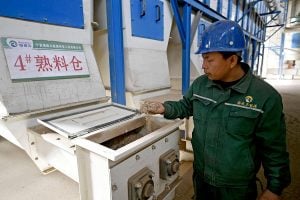For China and the world to achieve carbon neutrality will require both a steep reduction in “anthropogenic”, or human-caused, CO2 emissions and the removal of CO2 from the atmosphere. In pursuit of the latter goal, national climate change action plans are increasingly reliant on “negative-emission technologies”.
Some of these techniques to remove CO2 rely on chemical processes, such as direct air carbon capture and storage (DACCS) and enhanced weathering. The others use biomass, meaning matter from recently living organisms. They include afforestation, bioenergy with carbon capture and storage (BECCS), and biochar.
Biochar is a product similar to charcoal, produced by slowly heating biomass at high temperatures in the absence of oxygen. As it is rich in carbon and can be kept for centuries without degrading much, biochar is a promising, and mature, negative-emissions technology.
In 2019, the UN’s climate science body, the Intergovernmental Panel on Climate Change (IPCC), produced its special report on global warming of 1.5C. It found that, to stay within 1.5C, humanity must remove somewhere in the range of 100 billion to 1,000 billion tonnes of CO2 from the atmosphere between now and 2100.
In China, negative-emission technologies are critical if the country is to meet its “dual carbon” goals of peaking its carbon emissions by 2030, then reaching carbon neutrality by 2060. Projections indicate a median annual requirement for CO2 removal in China of about 1 billion tonnes between 2050 and 2060, with the high end reaching around 2.9 billion tonnes. That is equivalent to 10-27% of China’s current energy-related carbon emissions.
In 2022, the Ministry of Science and Technology issued a notice expressing the need to improve national negative-emission capabilities, such as through carbon capture, utilisation and storage (CCUS) and “green carbon sinks”.
A recent Tsinghua University study on biochar, which I co-authored, indicates a maximum CO2 removal potential for biochar under a “sustainable scenario” of 921 million tonnes per year. This scenario makes concessions to maintain ecological balance, considers the practicalities of feedstock collection, and deducts feedstocks for other basic uses such as feeding ruminant animals.
Adding in the carbon sequestration potential of forests, this scenario would mean China can achieve carbon neutrality without having to rely on immature negative-emission technologies, such as BECCS or DACCS. The study recommends east China and central-south China as suitable regions for piloting biochar application, due to the availability of feedstocks and the quality of soils.
From improving soil to combating climate change
The age-old process of making biochar involves slowly heating biomass, such as rice husks, straw and waste wood, to temperatures of 350-900C in an oxygen-starved setting. This process is called pyrolysis and it produces a substance rich in organic matter that decomposes extremely slowly, comprising mainly carbon, as well as by-products such as syngas.
Biochar’s stability and porosity meant that, hundreds or thousands of years ago, it initially found use as a soil conditioner, improving soil quality and crop yields. It became known as “black gold”.
As a CO2 removal strategy, the gas is first removed from the atmosphere via plant photosynthesis. These plants then undergo pyrolysis, during which around 30-40% of the carbon they hold is converted and fixed into more stable carbons. This biochar can then be returned to the ground and kept there for a long period, with 75% remaining after 100 years, while the syngas by-product can be used as a fossil-fuel replacement.
Compared to BECCS, biochar does not entail expensive carbon capture and storage costs. Pyrolysis, meanwhile, is a relatively mature technology that is viable even in remote locations without electricity.
Biochar has risen to prominence in the field of climate-change mitigation in the past two decades. It features in the 2019 Refinement to the 2006 IPCC Guidelines for National Greenhouse Gas Inventories, and is seen as an increasingly important part of achieving carbon neutrality.
Enormous potential
To estimate the negative-emission potential of biochar in China, our study measured various feedstocks: 16 agricultural residues (including maize and rice straw); 10 forestry residues (such as waste wood from timber harvesting); grassland residues (including hay production on natural grasslands); and potential energy crops (crops that can be used as fuel, such as miscanthus and sweet sorghum).
The results show that, under the sustainable scenario, biochar’s maximum negative-emission potential could reach 921 million tonnes of CO2 per year. This meets the negative-emission requirements of practically every deep-decarbonisation pathway for China that is compatible with the 2C upper warming limit of the Paris Agreement – namely, carbon removal in the range of 10 million to 1,100 million tonnes of CO2 per year.
Forestry carbon sinks could sequester about 627 million tonnes of CO2 per year. When combined with sequestration from biochar, this means China could reach carbon neutrality without needing to rely on immature technologies. This would leave the country with a diverse range of carbon-neutral pathways to choose from.
Cost advantage
The negative-emission cost of biochar is the total cost minus the gains for each tonne of CO2 captured by it. Costs include: procuring, transporting and storing biochar feedstocks; building, operating and maintaining pyrolysis plants; and transporting and applying the biochar. Gains include: revenues from selling syngas by-product; and increased crop productivity after applying biochar.
The study finds that biochar costs are low in China, leading to an average net negative-emission cost of USD 90 per tonne of CO2. This is based on feedstock from agricultural and forestry residues costing an average of USD 60-96 per tonne of CO2. In some areas, that cost can in fact be negative, resulting in a net gain. By comparison, the net cost of BECCS is typically USD 30-400 per tonne while DACCS is USD 300-1,000 per tonne.
The negative-emission potential and the cost of biochar vary widely at the regional level, from USD 12 to USD 150. This reflects the variability of factors such as feedstock type and distribution, and soil type and pH level.
The cost is lowest when biochar is prepared from forestry and agricultural residues. The average net cost of negative emissions is therefore lower in east China, where agricultural and forestry residues make up 85% of available biomass feedstocks. In parts of Shandong, Henan and Guangxi, application of biochar to high-yield cereals or other crops such as sugarcane can significantly raise incomes, due to the improvements in soil quality. However, costs are higher in north-west China, where biomass resources are scarcer. The smaller amounts of biomass processed at comparable pyrolysis plants in the region mean higher unit investment costs.
Finally, the co-benefit of higher yields is more pronounced in coarse and fine soils than in medium-textured soils, and in acidic soils over alkaline soils. As a result, farming areas in Zhejiang and further south, where soils tend to be coarse or fine, and acidic, will experience the most productivity gains from biochar application. Overall, central-south China and east China, which are rich in biomass resources and therefore entail lower costs, are preferable for piloting biochar application.
More work needed on research, accounting and pilots
At present, biochar is largely viewed in China as a green agriculture technology: good for reducing fertiliser inputs, improving soil quality and raising crop yields. Its role in climate-change mitigation has been neglected, mainly because of limited research. In China, biochar currently converts and stores just 500,000 tonnes of CO2 from the atmosphere per year – less than 0.04% of the country’s negative-emission demands.
Biochar contributes to climate-change mitigation by removing carbon, but there are some uncertainties. Its effectiveness depends on the soil to which it is applied and the properties of the type of biochar. Applying biochar affects soil carbon flux (the movement of carbon between soil and atmosphere), and the rate of biochar decomposition in soil also needs to be taken into account. Further research is needed.
In terms of negative-emission accounting, there are as yet no fully fledged, operable methodologies for tracking biochar’s carbon-removal capacity and negative-emissions cost (incorporating the gains from increased yields). Without one, biochar projects cannot play a part in China’s Certified Emission Reduction (CCER) scheme or future global carbon markets.
What is the CCER scheme?
The scheme enables the quantification and sale of CO2 reductions as credits by projects that include forestry, renewable energy and methane utilisation. Each credit corresponds to a tonne of CO2 reduction.
Another key issue is realising the value of biochar to the agriculture and energy sectors in financial terms. At present, the return on biochar primarily takes the form of revenues from selling it and its by-products. Scalable implementation of the technology is still constrained by high costs, particularly in connection with the difficulty of commercialising the syngas by-product of pyrolysis.
In my view, some areas of east and central-south China, rich in agricultural and forestry residues, are better suited for piloting negative-emission biochar technology at scale. Residues from these areas are high in carbon content, have good biochar conversion rates, and can be harvested cheaply. This makes for relatively low negative-emission costs.
Biochar pilot projects could be introduced in parts of Shandong, Henan and Guangxi, where high-yield cereals and other crops such as sugarcane are grown. This would take full advantage of the higher productivity that biochar generates in the soils found there, and the higher returns from biochar by-products that are possible in those areas. Efforts should also be made to improve syngas pipeline connectivity in these pilot areas and the associated infrastructure. This can facilitate the supply of syngas from biochar pyrolysis plants to nearby industries for heating or power generation, raising revenues that further reduce the cost of this negative-emission technology.
